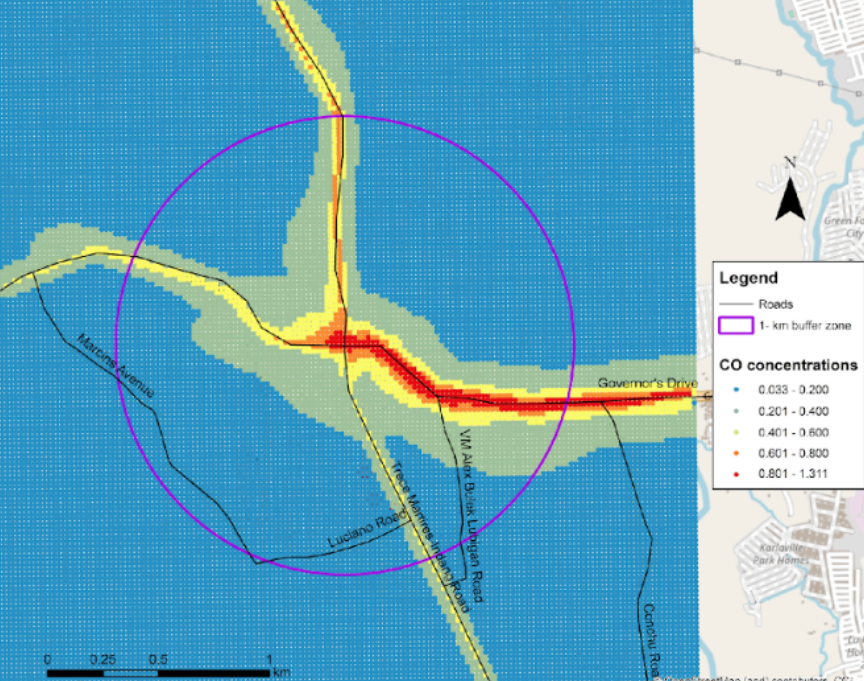Switching jeepneys to Euro-4 engines can significantly reduce air pollution and improve public health
04 Feb 2025

In the Philippines, new rules require public vehicles, like jeepneys, to use Euro-4 diesel engines, which are cleaner and more efficient. Jeepneys and other vehicles are responsible for 74% of the country’s air pollution. The goal of these new rules is to make the environment cleaner, improve air quality, and provide better public transportation. This study looks at the benefits of using Euro-4 engines in jeepneys in Trece Martires City. It measures the impact on air quality and health by looking at four main pollutants: Carbon Monoxide (CO), Nitrogen Oxide (NOx), Sulfur Oxide (SOx), and tiny particles in the air (PM2.5). The study considers five scenarios: (1) no new engines, (2) 25% of jeepneys with Euro-4 engines, (3) 50%, (4) 75%, and (5) all jeepneys with Euro-4 engines. The results show that if all jeepneys use Euro-4 engines, CO levels would drop by 84.30%, NOx by 21.76%, and PM2.5 by 83.36%. However, SOx levels would increase by 14.14%. Lower levels of PM2.5 mean fewer health problems and deaths. In summary, switching to Euro-4 engines in jeepneys can greatly reduce air pollution and improve public health, helping the city create better transportation and health plans.
The study aims to estimate and quantify the impact of regulating the use of Euro 4 diesel-powered engine jeepneys on the reduction of air pollution in Trece Martires City, Cavite. Drivers and commuters play a vital role in the economic stability of the city. Ensuring the health and safety of the citizens has always been the main goal of every community. Thus, model simulation outputs indicate that the transitioning of jeepneys from current technology to Euro 4 models can reduce pollution levels and lowers health risk, hence, can be used as basis in enhancing transport plans and health monitoring strategies in the city.
Authors:
J. D. de Guinto (Department of Civil Engineering, College of Engineering, Computer Studies and Architecture, Lyceum of the Philippines University, General Trias City) , A. H. Dela Rea (Department of Civil Engineering, College of Engineering, Computer Studies and Architecture, Lyceum of the Philippines University, General Trias City), B. M. V. Galang (Department of Civil Engineering, College of Engineering, Computer Studies and Architecture, Lyceum of the Philippines University, General Trias City), H. R. A. Rodriguez (Department of Civil Engineering, College of Engineering, Computer Studies and Architecture, Lyceum of the Philippines University, General Trias City), D. B. Sibal (Department of Civil Engineering, College of Engineering, Computer Studies and Architecture, Lyceum of the Philippines University, General Trias City) and Roseanne Villanueva Ramos (Department of Geodetic Engineering, College of Engineering, University of the Philippines Diliman)
Read full paper: https://isprs-archives.copernicus.org/articles/XLVIII-4-W8-2023/149/2024/isprs-archives-XLVIII-4-W8-2023-149-2024.pdf
